"in your heart shall burn/ an unquenchable flame/ all-consuming, and never satisfied"
Don't wanna be here? Send us removal request.
Photo

HOW TO WRITE A HIGH-GRADE RESEARCH PAPER
~~~~~~~~~~~~~~~~~~~~~~~~~~~~~~~~~~~~~~~~~~
The first time I had to write a research paper for university was one of the most stressful experiences I’d ever had - it was so different to anything I’d ever done before and caused me so much anxiety! It turned out that I’m pretty damn good at writing research reports and I’m now looking to pursue a career in psychological research.
I have never received less than a First (or 4.0 GPA for you American studiers) in my research papers so I thought I’d share my top tips on how to write a kick-ass, high-grade research paper.
*disclaimer: I am a psychology student, my tips are based on my personal experience of writing up psychological research (quantitative and qualitative); therefore, they may require some adaptation in order to be applied to your field of study/research*
These tips will be split up into the different sections a research paper should consist of: abstract, introduction, methods, results, discussion, references and formatting.
ABSTRACT
The aim of an abstract is to summarise your whole paper - it should be concise, include key-words, highlight the key points of your paper and be written last.
When I say concise, I mean concise! The abstract is what other students and researchers will read in order to decide whether your research is relevant their own work and essentially determines whether or not they’ll read on - they want to know the key details and don’t want to be overwhelmed with information.
I always aim to keep my abstracts under 250 words. I set myself this limit to stop myself waffling and dwelling on unimportant points, it helps me to be really selective of what I include and ensures I’m gripping the reader from the start.
Your abstract should discuss the research rationale, the methods and designs used, your results and the general conclusion(s) drawn. One or two sentences on each of these topics is enough.
Make sure you’re using key-words throughout your abstract as this will also help the reader decide whether your work is relevant to theirs. You can make key-words super obvious by highlighting them in a key at the bottom of your abstract (see below) or just used jargon consistently. Using key-words is also important if you’re looking to get your work published, these words will help people find your work using search engines.

Finally, write your abstract last! An abstract is a summary of your whole research paper which makes it practically impossible to write well first. After writing the rest of your paper, you will know your research inside and out and already have an idea of what key things you need to highlight in your abstract.
INTRODUCTION
For me, the introduction section is always the most intimidating to write because it’s like painting on a blank canvas - massively daunting and leaving you terrified to make a mistake!
The aim of an introduction is to provide the rationale for your research and justify why your work is essential in the field. In general, your introduction should start very broad and narrow down until you arrive at the niche that is your research question or hypothesis.
To start, you need to provide the reader with some background information and context. You should discuss the general principle of your paper and include some key pieces of research (or theoretical frameworks if relevant) that helps your reader get up to speed with the research field and where understanding currently lies. This section can be pretty lengthy, especially in psychological research, so make sure all of the information you’re including is vital as it can be pretty easy to get carried away.
This background should lead you onto the rationale. If you’ve never written a research paper before, the rationale is essentially the reason behind your own research. This could be building on previous findings so our understanding remains up to date, it could be picking up on weaknesses of other research and rectifying these issues or it could be delving into an unexplored aspect of the field! You should clearly state your rationale and this helps lead into the next section.
You should end your introduction by briefly discussing your current research. You need to state your research question or hypothesis, how you plan on investigating the question/hypothesis, the sample you plan on using and the analysis you plan to carry out. You should also mention any limitations you anticipate to crop up so you can address these in your discussion.
In psychology, references are huge in research introductions so it is important to use an accurate (and modern as possible) reference for each statement you are making. You can then use these same references in your discussion to show where your research fits into the current understanding of the topic!
METHODS
Your methods section should make use of subheadings and tables where necessary and should be written in past tense. This can make the (potentially) lengthy section easier to navigate for the reader. I usually use the following headings: participants, materials, design, procedure.
The participants section should describe the sample that took part in your research. Age, gender, nationality and other relevant demographic information should be provided as well as the sampling technique. Personally, I use a table (see below) alongside my continuous prose as an alternative way of viewing my sample population. Please note, if you’re using a table make sure it adheres to your university guidelines.
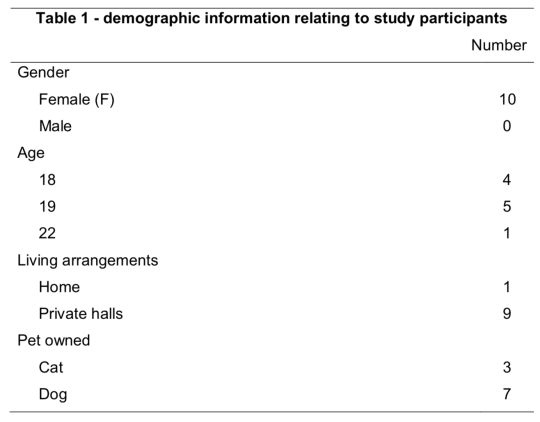
The materials section of your methods should include any equipment, resources (i.e. images, books, diagrams) or any other materials used in your data collection. You should also reference the program that helped you conduct your analysis. For example, if you are writing a qualitative research paper, you may want to include Microsoft Word in your materials if you use the program to transcribe interviews.
You should then describe the design used in your research. All variables should be identified in this paragraph, if relevant. You should also discuss whether your research is within-groups or between-groups, again only if relevant.
Last is your procedure section - the most important one! You must write this section with enough detail so that anybody could pick it up, read it and conduct the same experiment with ease. You should describe what participants were required to do, how data was collected and it should be written in chronological order! While it’s important to provide enough information, try not to overwhelm the reader with lengthy sentences and unnecessary information.
RESULTS
Your results section’s sole purpose is to provide the reader with the data from your study. It should be the second shortest section (abstract being first) in your research paper and should stick to the relevant guidelines in regards to reporting figures, tables and diagrams. Your goal is to relay results in the most objective and concise way possible.
Your results section serves to act as evidence for the claims you’ll go on to make during your discussion but you must not be biased in the results you report. You should report enough data to sufficiently justify your conclusions but must also include data that doesn’t support your original hypothesis or research question.
Reporting data is most easily done through tables and figures as they’re easy to look at and select relevant information. If you’re using tables and figures you should always make sure you’re stating effect sizes and p values and to a consistent decimal place. Illustrative tables and figures should always be followed by supporting summary text consisting of a couple of sentences relaying the key statistical findings in continuous prose.
DISCUSSION
The discussion section should take the opposite approach to your introduction! You should start discussing your own research and broaden the discussion until you’re talking about the general research field.
You should start by stating the major findings of your study and relating them back to your hypothesis or research questions. You must must must explicitly state whether you reject or accept your experimental hypothesis, if you have one. After stating your key findings you should explain the meaning, why they’re important and where they fit into the existing literature. It’s here that you should bring back the research you discussed in your introduction, you should relate your findings to the current understanding and state the new insight your research provides.
You should then state the clinical relevance of your research. Think about how your findings could be applied to real-life situations and discuss one or two practical applications.
After this, discuss the limitations of your research. Limitations could include sample size and general sample population and how this effects generalisability of findings, it could include methodological problems or research bias! These limitations will allow you to discuss how further research should be conducted. Suggest ways in which these limitations could be rectified in future research and also discuss the implications this could have on findings and conclusions drawn.
Finally, you need to give the reader a take-home message. A sentence or two to justify (again) the need for your research and how it contributes to current understanding in the field. This is the last thing your audience will read so make it punchy!
~~~~~~~~~~~~~~~~~~~~~~~~~~~~~~~~~~~~
That’s it folks! My tips for writing a kick-ass, high-grade research paper based on my personal experience. If you have any questions regarding things I’ve missed or didn’t provide enough detail of, then please just send me an ask!
Also, if any of you would like to read any of my past research papers I would be more than happy to provide you with them :-))
7K notes
·
View notes
Text
here is a google doc of resources to support george floyd, ahmaud arbery, roy stoddart, and the many, many, many other wrongfully murdered black people in the united states — as well as the black lives matter movement in general
please share this link or post to anyone and everyone
74K notes
·
View notes
Text
When you guys have visited potential apartments, what kind of questions did you ask besides the basics like what rent and utilities include?
226K notes
·
View notes
Text
PASSIVELY DONATE THRU YOUTUBE VIDEOS
here’s a small list of videos you can watch and passively donate to different funds that are a part of the black lives matter movement. if you are interested in donating as well, i’ve linked most of the funds and organizations the youtubers are donating too. please do not skip the ads!!
I FOLLOWED A PROFESSIONAL MAKEUP ARTIST’S TUTORIAL: to the Black Visions Collective (x)
80p makeup... but what’s the catch? TESTING SHOP MISS A! First impressions and WEAR TEST!: to the George Floyd memorial fund (x)
In-N-Out Mukbang: to the Minnesota Freedom Fund (x)
how to help BLM with NO MONEY/leaving your house: to protestor bail funds of different states
I Got Drunk And Gave Relationship Advice! The ULTIMATE guide to BOYS & GIRLS!!: to the George Floyd fund and other racial equality charities (x)
Baby Products I Regret Buying: to the George Floyd memorial fund (x) and National Bail Out (x)
MY #1 PRODUCT FROM 10 DRUGSTORE BRANDS: the Black Visions Collective (x)
BIG LOUIS VUITTON HAUL | SS 2020 ESCALE + MORE | hollyannaeree: to the George Floyd memorial fund (x) and Campaign Zero (x)
WANT TO DONATE TO BLACK LIVES MATTER BUT HAVE NO MONEY? WATCH THIS VIDEO: to the Black Lives Matter organization (x)
Watch To Donate For FREE: Black Lives Matter: to Campaign Zero (x), NAACP (x), Black Lives Matter (x), Unicorn Riot (x), Comminuties United Against Police Brutality (x), ACLU (x), Color of Change (x), Equal Justice Initiative (x), Reclaim the Block (x), National Bail Out Fund (x)
Huge Prettylittlething & Missguided TRY ON Haul NEW IN... MAJOR Retail Therapy!!: to the George Floyd fund (x) and others
MAY FAVORITES & BOOKS I’VE READ THIS MONTH | I Covet Thee: to The Bail Project (x)
Quarantine Graduation Cap Cake for Class of 2020 | How to Cake It with Yolanda Gampp: to an unspecified organization dedicated towards the education for black students
AMSR Putting Fenty Makeup on Rihanna (Paper Makeover): to the Black Visions Collective (x) and Support the Cities (x)
DECLUTTER, DIY & DECORATE #WITHME Little Girl’s Boho Room Transformation UNDER $100!!!: to the George Floyd memorial fund (x)
TikTokers SPEAKING OUT About RACISM & BLACK LIVES MATTER (Ft. Charli D’amelio, Dixie D’amelio): to the Black Lives Matter foundation (x)
Let’s Talk About It: Racism & Social Injustice: to the Black Lives Matter foundation (x)
“but i’m not racist?”: to the Minnesota Freedom Fund (x)
regarding everything that’s happening: to the George Floyd memorial fund (x), Minnesota Freedom Fund (x), Los Angeles bail relief fund (x), Atlanta bail relief fund (x), Chicago Freedom School (x), People’s Breakfast Oakland (x), Black Queer/Trans operated fund in MN (x)
91K notes
·
View notes
Photo


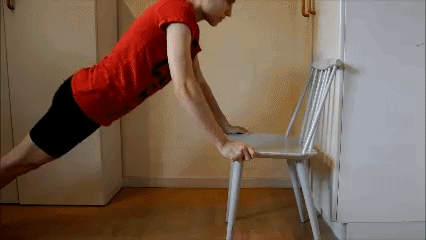
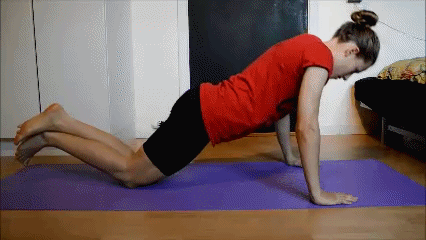

Some eaiser variations of push ups to help you build the strength to do a traditional one!
509K notes
·
View notes
Photo








Parasite wins four Oscars at the 92nd Academy Awards, the first film not in the English language to win Best Picture!
15K notes
·
View notes
Text
GUIDE TO:
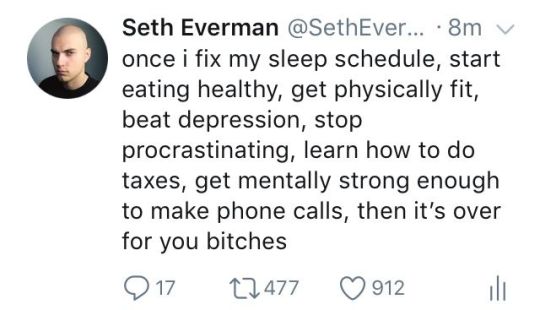
FIX YOUR SLEEPING SCHEDULE (1-2 months)
Try to wake up earlier every day. Like 5 - 10 min earlier than the day before. Until you wake up any time before 8am or so…
If you struggle with waking up & snooze button is you bff:
Put your alarm clock as far away from the bed as possible.
Drink a glass of water right after you wake up.
Pour another glass of water on yourself right after you wake up.
Prepare some coffee the night before, leave it by your bedside, drink it after you wake up.
Have your blinds/curtains open, so that it’s bright after you wake up.
Try to go to bed 5-10 min earlier than the night before.
Track how many hours of sleep you’re getting. Aim to get at least 7h per day or 49h per week.
Increase your sleeping hours incrementally. Aim to get at least 1h of sleep more than the previous week. For example, if this week you slept for 41hrs, aim to get an extra hour of sleep next week, so it’s 42h.Once you get enough hours of sleep and wake up early-ish.
Try to keep your sleeping schedule consistent. It is really important to go to bed and wake up at the same time every day. Even if it’s weekend. Or even if that means, you getting less than 7hrs of sleep that day. I’d say waking up at the same time everyday is the most important step, which will help you the most with fixing your sleeping schedule.
START EATING HEALTHY (1-2 months)
This step really depends from person to person, but firstly I suggest you take some blood tests to see if you have any deficiencies, etc. Especially, if you struggle with cravings.
Try intermittent fasting, if you struggle with binge eating or overeating. As it will help you to learn to listen to your body better: when it’s hungry, when it’s full, etc. It’s really simple, there are many methods of Intermittent fasting, but I’d suggest 16/8 for the beginners. (Google it for more info)
DRINK ALL THE WATER. Again, if you’re not drinking enough water, try to level up your water game incrementally. Download some water tracking app on your phone to help you. Drinking water will make you more energetic, increase your metabolism, and decrease you appetite (among many more benefits).
Track what you eating. I would really suggest tracking your meals for around a month. Because, most of the time people have no idea that what they’re eating is unhealthy. Again, download an app to your phone for that.
Make your own meals once in a while. Not only this will save you money, but it’ll help you to see what’s really going into your body.
Eat less meat and more veggies/fruits. Go to your local market and buy some veggies/fruits, you have never tried before. I’m sure you’ll find your new favs. Eat/buy less meat. Not only it’s good for the environment, but it is good for you, too. Get a veggie burger instead of the beef one, etc.
Cut dairy. Find your new favourite milk substitute. Advice: Oat milk is really good with the tea and oatmeal/porridge; hazelnut milk is amazing on it’s own; cashew milk goes well with cereals.
Learn more about nutrition in general. It will help you to make better food choices and it will make eating healthy much easier in general, because once you understand all the chemistry behind the food and what it does to your body, you kinda don’t want to make yourself feel worse. Here are some free resources: - Human nutrition course from Alison.com - Crash course Metabolism&Nutrition: Part 1 and Part 2 - The Health Nerd’s YouTube Playlist about nutrition - What I’ve Learnt YouTube Playlist - Human nutrition course from Alison.com - Crash course Metabolism&Nutrition: Part 1 and Part 2 - The Health Nerd’s YouTube Playlist about nutrition - What I’ve Learnt YouTube Playlist
GET PHYSICALLY FIT (2-6 months)
Define your goals. Do you want to lose weight, do you want to get stronger, gain weight, be able to climb stairs without losing breath, run 5k?
Remember - you’re half-way through. Being physically fit has a lot to do with what you put into your body. So, if you fulfilled the previous step of eating healthy - you are half way through!
Make a plan. A Reasonable plan. Be honest with yourself.
Start small. Like, 5 min exercise in the morning. Or doing 10 sit ups per day. Don’t do anything overwhelming, like running 5k everyday if you haven’t run for the past 5 years.
Make sure that you kinda like what you’re doing. If you absolutely hate running - don’t do it. Hate doing sit ups in the morning? Try some yoga instead.
Explore until you find what you like. You don’t have to go to gym to get fit, especially if you hate it. Find a type of exercise, which you actually like. Maybe it’s dancing or hiking, taking your dog for a walk. Sign up for several trial lessons of various sport clubs. Ditch ‘em if you have them until you find something that you love. Stick with that.
Do the small changes in your everyday life. Stairs>Escalator, Walk>Drive, Do some squats while brushing your teeth, switch from regular desk to standing desk, etc… Find ways to incorporate being active into your everyday life
Track your effort instead of your progress. You cannot really control your progress that much (especially if your goal was to lose weight). However, you can always control your effort. So track it instead. This will leave you more motivated. As you will be able to see that you can do more and more everyday. Whereas, if you tracked your progress, you may not always get the result you hoped for, which might demotivate you and make you upset, wanting to quit.
BEAT DEPRESSION
Do the previous 3 steps and you’re half way through.
See a therapist/doctor. Depression is an illness, requiring medical treatment. So, get it. Remember: there is absolutely no fucking shame in having a mental illness.
Get some extra support. Talk to your friends or family. Or maybe someone on the internet.
Write it out. If you don’t want to talk - write down your thoughts. It can be just as helpful. It’ll help you to understand yourself better, see problems in your thinking, etc.
Distract yourself from yourself. Get someone/something to take care of, so that you can, for a moment, stop thinking about yourself and focus on something else. E.g, get a plant, or a dog, or a fish.
Self-care day. Dedicate at least one day per week for self-care. Take yourself out, either to a museum or some fancy cafe, do some stuff you like, whatever your hobbies are, do some physical self care: bath, face mask, manicure, etc., listen to some nice music, watch a film…..
STOP PROCRASTINATION
Celebrate your victories instead of mourning over your loses.So the only thing you’ve done today was write one sentence for your 20 page essay? Amazing! Buy yourself a candy for that!! I mean, you could’ve done nothing, but you didn’t - you wrote that one sentence and that’s worth celebrating.
Do it for only 2 minutes. If there’s an important thing you’ve been putting off for a while, tell yourself that you will only spend 2 minutes on doing it. If after 2 minutes you don’t want to do it anymore, great, stop it. However, after 2min. you actually might want to do more. No pressure either way.
Track your productivity. Track how much time you’ve been productive that day. Try to increase that time by a little bit every day.
Always forgive yourself. So, it’s been a week and you’ve done nothing? Don’t sweat it. Let it go. Blaming yourself will bring you absolutely nothing. Nothing good will come out of your negativity on yourself. So stop it. Forgive yourself and start again. And again, if you need to. Never stop trying. Always pick yourself after you fall. Beating procrastination and increasing your discipline is a skill. And all skills can be build on. There is nothing in you stopping you from changing. Remember that.
LEARN HOW TO DO TAXES (1h - 1 day)
Go to google.com.
Type in: “How to do taxes *the name of the country you’re living in*”
Read the results.
GET MENTALLY STRONG ENOUGH TO MAKE PHONE CALLS
Remember that just as with beating procrastination, making phone calls is a skill. And, again, skills can be learnt.
Get a new SIM card.
Top it up.
Dial some random numbers and pretend to be a salesman, selling whatever you like.. E.g., trying to sell broadband, cable tv, trying to get people to donate for some charity… Or whatever really… Me and some friends used to pretend we’re selling kittens or wood logs. Alternatively, you can pretend that you dialed a wrong person and talk about whatever, e.g. “Hey, Jess!! You wont believe what I saw today!! *start telling a made-up story*…”
If you get uncomfortable - just drop the call. No consequences whatsoever.
Repeat until you build up your game and your phone-call anxiety starts to diminish.
SLAY THOSE BITCHES Congratulations, now you’re ready to take over the world! Got get ‘em!!
50K notes
·
View notes
Text
guys please keep Puerto Rico in your thoughts, we have been having earthquakes for the past 10 days and this last one was a 6.6
electricity is out everywhere, people are scared, we’re still recovering from hurricane maria and houses have collapsed. please stay tuned, i will try to keep updated as long as my battery holds out.
32K notes
·
View notes
Photo




There is good fortune in your future, and this cat is just letting you know! ✨
Did you know you can get a limited edition surprise Chibird pin in your mail each month? Check out my positive pin club! ✨
9K notes
·
View notes
Note
how do i learn how to storyboard comics
1. set the panels
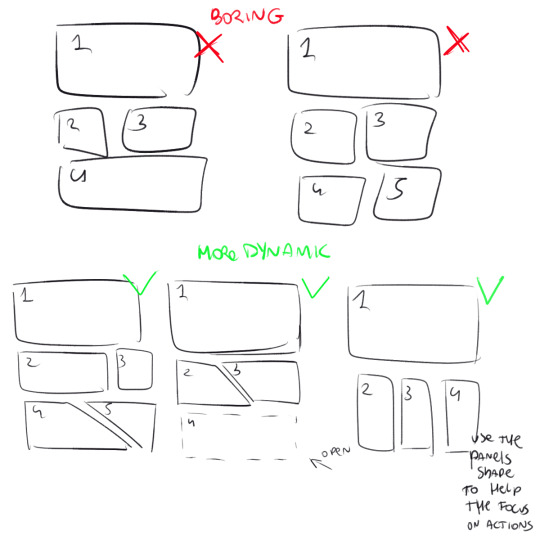
the first version is the easier but also boring for the eye, the sequence rectangular-square-square and repetitive, try to use diagonal cut, open space and vertical cut to help the movement of the story and action.2. use movement to tell the story

3. Pose, Perspective and Line density
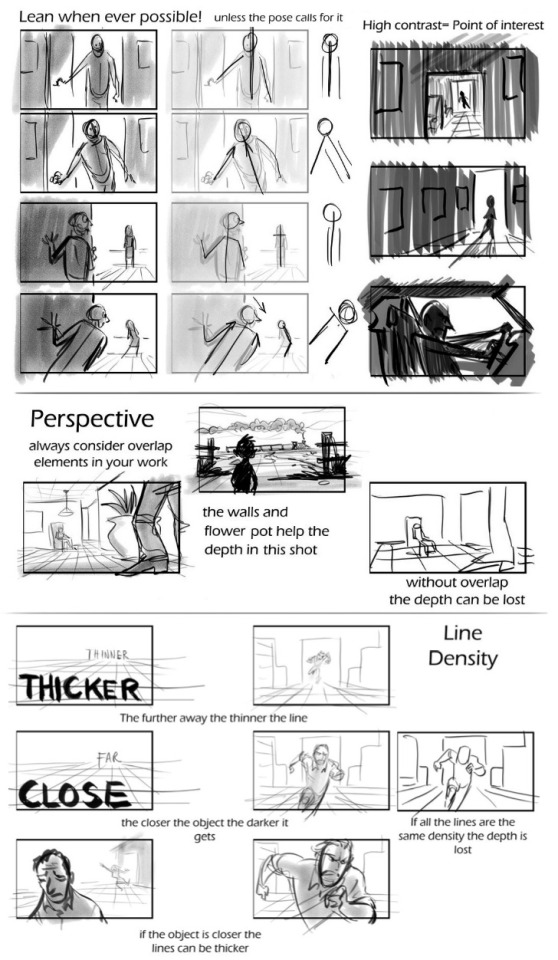
4. Framing and Silhouettebeing the file too big it’s a link format
In my opinion, those are the main rules to make a good storyboard. If you need more help ask awayMOD.gif
49K notes
·
View notes
Photo


Mom is under the weather so the witchcraft is real in this house tonight. Illness be gone, I don’t have time for your shit.
34K notes
·
View notes
Text

The country of Iceland has held a funeral for its first glacier lost to the climate crisis. The once massive Okjokull glacier, now completely gone, has been commemorated with a plaque that reads: “A letter to the future. Ok is the first Icelandic glacier to lose its status as a glacier. In the next 200 years all our glaciers are expected to follow the same path. This monument is to acknowledge that we know what is happening and what needs to be done. Only you know if we did it.”
This reality is reverberating across the globe, far beyond Iceland. Even when no literal funeral is being held, we are, in a sense, witnessing an ongoing funeral for the world we once knew.
July was the hottest month ever recorded on Earth since record keeping began in 1880. Nine out of the 10 hottest Julys ever recorded have occurred since 2005, and July was the 43rd consecutive July to register temperatures above the 20th century average.
In Greenland, scientists were stunned by how rapidly the ice sheet is melting, as it was revealed the ice there was not expected to melt like this until 2070. The melt rate has been called “unprecedented,” as the all-time single-day melt record was broken in August as the ice sheet lost a mind-bending 12.5 billion tons of water in one day. It is worth remembering that the Greenland ice sheet contains enough ice to increase global sea levels by 20 feet, and it is now predicted that it will lose more ice this year than ever before.
Also for the first time in recorded history, Alaska’s sea ice has melted completely away. That means there was no sea ice whatsoever within 150 miles of its shores, according to the National Weather Service, as the northernmost state cooked under record-breaking heat through the summer.
Earth
A recent UN report estimates 2 billion people are already facing moderate to severe food insecurity, due largely to the warming planet. The other contributing factors are conflict and economic stagnation, but extreme weather events and shifting weather patterns are a large and growing contributor to this crisis, which is sure to escalate over time.
Another recent study, titled “Adaptive responses of animals to climate change are most likely insufficient,” showed that many animals are no longer able to adjust quickly enough to the climate crisis. While birds are laying their eggs earlier as temperatures and conditions change, and are doing what they can to coax their chicks to hatch sooner, it is still not enough to keep apace with the dramatically shifting climate. Many more extinctions are on the horizon.
Speaking of, Beluga whales in the Arctic are now clearly in a downward spiral toward their demise, due largely to climate crisis impacts, according to another study. Warming waters, lack of food, and pollution are taking their toll on the embattled whales. Over the past 20 years, their growth rates have been declining, which means their ability to forage for food is now also compromised.
It is interesting to see even mainstream outlets like People Magazine now reporting on climate grief, which the medical community has already been doing for quite some time, and expects to see a dramatic ramping up of climate-disruption-related mental health issues in the future.
In Greenland, residents are already traumatized by climate impacts, as they are coping with the reality that their traditional ways of life are clearly on the way out. Courtney Howard, board president of the Canadian Association of Physicians for the Environment, told The Guardian that she believes the climate crisis is causing worsening states of mental and physical health around the world, and says these issues will become some of the most important of our time. “Temperature change is magnified in circumpolar regions,” she told The Guardian. “There is no question Arctic people are now showing symptoms of anxiety, ‘ecological grief’ and even post-traumatic stress related to the effects of climate change.”
In the financial realms, a leading economic historian warned recently that the climate crisis could very well become the trigger for the next global financial crisis by way of causing instability and massive disruptions in markets.
Distressingly, a recently published study warned that a new superbug which erupted at the same time on three continents may well have been brought about from warming temperatures. The study pointed out how a drug-resistant fungal disease has now been made more prevalent by existing on a warming planet.
A recent report from Canada warned that British Columbia could see “catastrophic” consequences from climate disruption-related events in the next three decades. These include more severe wildfire seasons, increasingly intense and longer heat waves, water shortages, and storm surges across the province.
Speaking of Canada, that country’s Pediatric Society recently warned that children’s health is expected to be increasingly negatively affected by climate-disruption impacts, including things like air pollution and heat stress.
Water
Drought-induced blackouts are now besetting the people of Zimbabwe, where some places are seeing 18 hours per day without electricity. Imagine that in the summer heat. Dams providing hydropower lack water. Power blackouts are spreading.
In Harare, Zimbabwe’s capital city, the taps have run dry, affecting more than 2 million people, who have been trying to cope with not having access to municipal drinking water.
In India, a stunning 1 million people were displaced and at least 270 killed by severe flooding from heavier than usual monsoon rains.
Back in the U.S., New York City’s summer has served as a preview of things to come, as an extreme heat wave coupled with flash flooding beset the iconic city.
On the other end of the water spectrum, a recent study published in Science Advances warned that megadroughts will likely beset the U.S. Southwest within decades. The study stated that the megadroughts are “almost assured,” and will be on a scale not seen since medieval times.
At the same time, by 2050, another report warned that “snow droughts” will become far more common across the western U.S. This is critical, in that it compounds the aforementioned impending drought crisis, as mountain snowpack is vital to providing water into the spring and summer.
A recent and critically important study showed that one quarter of the total global population across 17 countries is already affected by extreme water stress. Lebanon, Qatar and Israel/Palestine top a list of places with the worst water shortages, as the growing climate crisis threatens more “day zeroes” — days where major cities will literally run out of water.
Meanwhile, sea levels continue their inevitable and accelerating rise. In the U.S., a recent report showed how 21 beach towns, including Miami Beach, Galveston, Atlantic City and Key West, will soon be underwater.
Speaking of Galveston, the state of Texas is looking toward Dutch expertise for assistance in how to construct what would be the nation’s most expensive and most ambitious coastal barrier for protection against intensifying hurricanes. The Netherlands has been devising ways to protect massive parts of its low-lying country against the ocean for centuries. Now the skills it has cultivated are, soberingly, increasingly relevant worldwide.
Meanwhile, the oceans continue to warm as they absorb the brunt of the heat human activity is adding to the atmosphere, and the warming waters are literally pushing Pacific salmon to the brink of their ability to survive, according to another report.
Distressingly, a recently published study showed that unexpected marine heat waves are now becoming the norm rather than the exception.
Alpine mountaineering routes are disintegrating as glaciers and icefields melt in the Alps. The ice-reliant climbing routes in the mountains are tumbling down and melting away faster than anyone expected.
Greenland experienced a record heat wave in the middle of this summer, which dramatically accelerated the melting of the ice sheet, meaning its contributions to sea level rise are in the process of accelerating as well.
Meanwhile, scientists have expressed alarm and shock about the fact that the permafrost across the Canadian Arctic is thawing out 70 years sooner than previously predicted.
Things are so dire in the icy realms of Earth that the country of Iceland is now preparing for how it will cope without any more ice … something that country relies upon for its identity, businesses, government and very existence.
Fire
These stunning satellite photos show an Arctic burning up in front of our eyes. In Alaska alone, at the time of this writing, at least 1.6 million acres have burned from at least 100 wildfires this summer. Wildfires in Siberia could well burn into October when the first snows fall, as at least 6.7 million acres have burned across Russia.
Another report showed that, due to climate disruption, wildfires in California have already become 500 percent larger than they were since the 1970s.
Canadian media are reporting that forests that have been scorched in the Pacific Northwest are not growing back as expected. This brings into question numerous species of trees’ ability to regenerate as the fires get increasingly hot, burn longer, and scorch longer areas.
At the same time, another report reaffirmed the fact that even the rainy Northwest is now facing the inevitable increased risk of wildfires due to higher temperatures, increasing drought and lower humidity.
Air
By 2050, Florida will have more days that feel like 100 degrees Fahrenheit (100°F) than any other state in the U.S., according to a recent study. Washington D.C. currently averages one week per year of 100-degree days, while by 2050 that could rise to two months. The same study warned that climate disruption will expose millions of people across the U.S. to “off-the-charts” extreme heat.
Meanwhile, Europe sizzled under a record-breaking heat wave this summer, as heat from the Sahara baked the continent and temperature records toppled en masse. There are far too many records to name from that heatwave, but notable was the fact that Germany, Belgium and The Netherlands recorded their highest temperatures ever during Europe’s second major summer heatwave.
In Canada, the far northern community of Nunavut saw warmer temperatures than the city of Victoria, far to its south. According to CBC News, “the source of the Arctic beach weather is a large current of air that somehow found its way north from the U.S. southeast” — a much more common occurrence as warming intensifies.
Denial and Reality
Ever busy denying the crisis, in the last month the Trump administration buried a large climate disruption response plan, as revealed by Politico. The outlet revealed how the Agriculture Department prevented the release of an already completed and sweeping plan about how the government should best respond to the climate crisis.
Meanwhile, in what could have been a slip of the tongue, Trump’s Energy Secretary Rick Perry said during a recent nationally televised interview, “The climate is changing. Are we part of the reason? Yeah, it is. I’ll let people debate on who’s the bigger problem here.”
It’s not just the Trump administration that’s fueling denial. It was also revealed how DNC Chair Tom Perez introduced a resolution in an attempt to kill a climate debate among the Democratic presidential candidates.
Nevertheless, reality has a way of not going away, despite human efforts at denial.
A recent report showed that the climate crisis is already well along in causing childhood deaths and the stunting of growth in Australia and across the Pacific. Other impacts on kids include lowered cognitive capacity and higher susceptibility to the spread of diseases.
And, to keep all of this in perspective, as a final reality check, the burning of fossil fuels reached an all-time record last year, according to oil giant BP.
For perspective on the rate of acceleration now baked into the system, half of all fossil fuels used by humans have been burned since just 1990. Many more consequences are lurking just around the corner: It takes at least 10 years before we begin to see the impacts of the CO2 once the fuels are burned.
Source: https://truthout.org/articles/alaskas-sea-ice-completely-melted-for-first-time-in-recorded-history/
Please share. Thank you.
7K notes
·
View notes
Text
ugh fine my personal blog is not cutting so I’ll post here
DO! NOT! DONATE! TO! AMAZON! CONSERVATION! NGOs! DO NOT!
they don’t act on the root of the problem, they don’t mitigate the effects of deforestation, they do have limited action and they don’t help conserve the forest land outside their very small grounds besides doing little to nothing to help the people who actually live in the amazon and conserve it on a daily basis
DONATE TO THE INDIGENOUS MOVEMENTS INSTEAD
they are organized, they can keep woodcutting companies away from their land, they are getting murdered for it, they are the only reason there is any forest left at all
98K notes
·
View notes
Text
DON’T SCROLL PAST THIS
for the last 2+ weeks, the Amazon has been catching fire. Yes, it’s the season where that’s normal but because of the sayings (aka incentive) of our new president, some farmers are taking advantage of that and intentionally setting the trees on fire. Yesterday, because of this, the sky of São Paulo looked like this. AT THREE IN THE AFTERNOON.
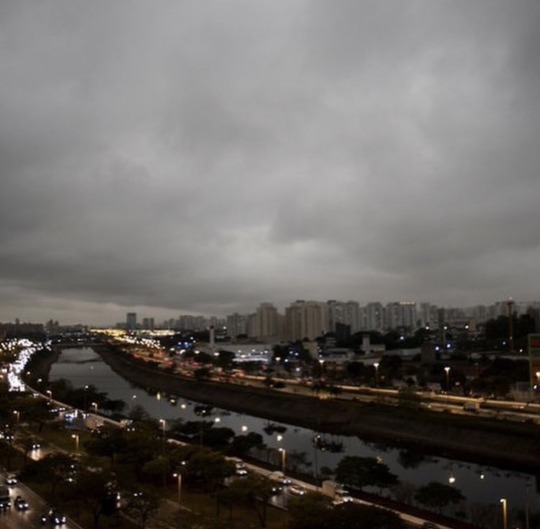
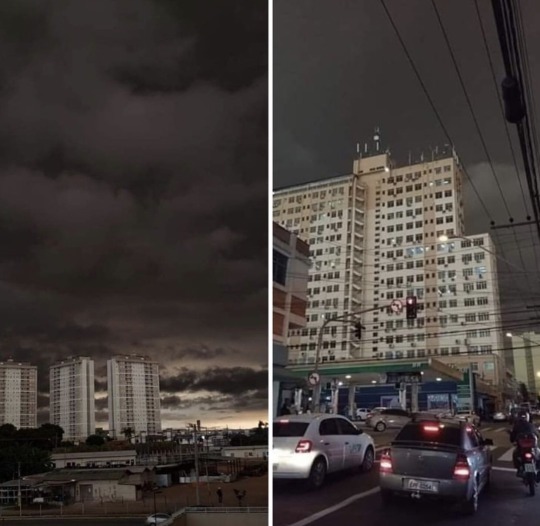
Hospitals of the northern states are filling up with people (especially children and seniors) claiming they can’t breathe properly. ALREADY ENDANGERED ANIMALS ARE DYING. THIS IS SERIOUS.

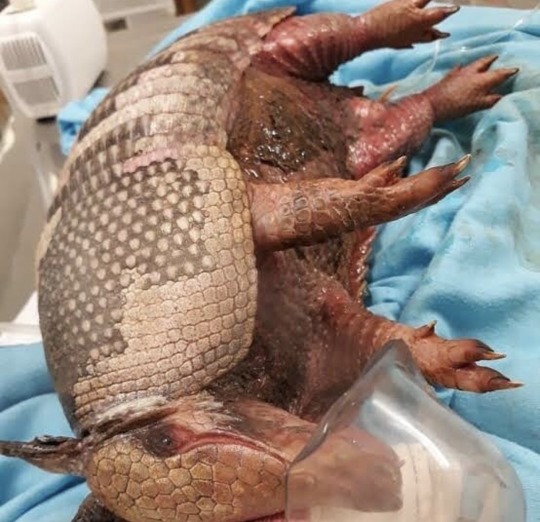
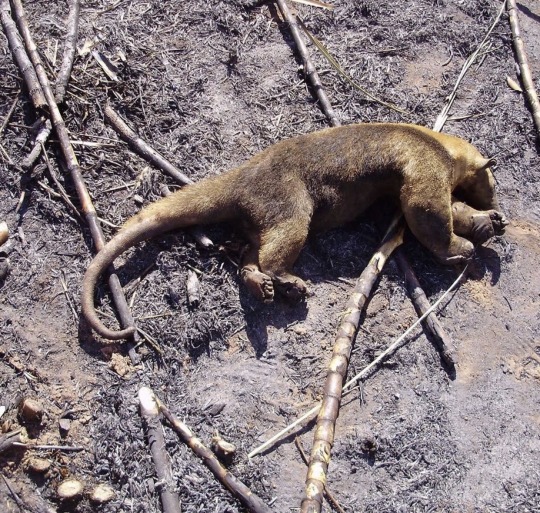
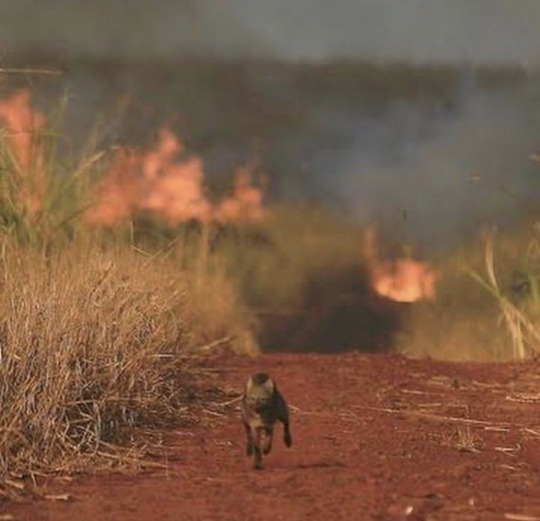
Germany and Norway, huge donators to the Amazon cause will stop sending money because they don’t see results (that can also be credited to our president, who has been tweeting angrily ever since - not because he cares about the environment, btw). That money gives this guy and his team equipment to save little guys like these:

THIS AFFECTS EVERYONE, NOT JUST BRAZILIANS. The Amazon is the largest rainforest in the world, and it’s being destroyed. WE HAVE TO DO SOMETHING.
If your country is holding elections, vote for someone who cares about this. Don’t let another Bolsonaro or another Trump have the power to do something and then do nothing. This is going to shape our future — if we have one.
PLEASE REBLOG, EVERYONE NEEDS TO SEE THIS!!
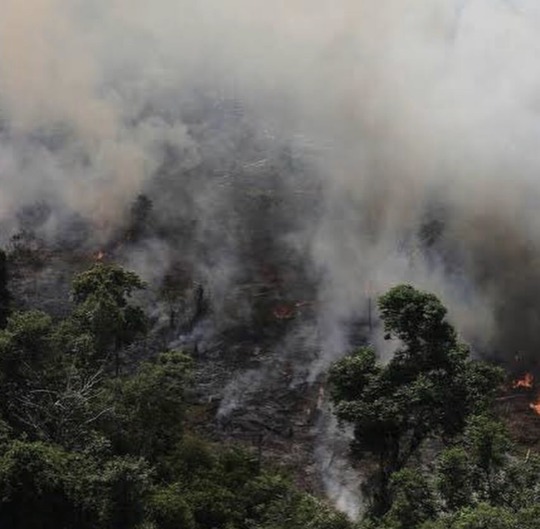
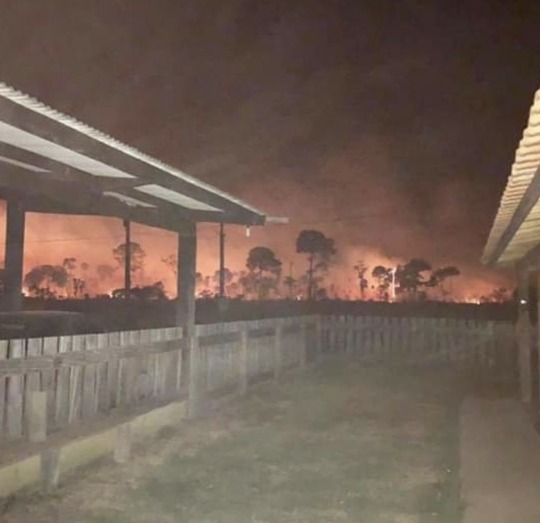
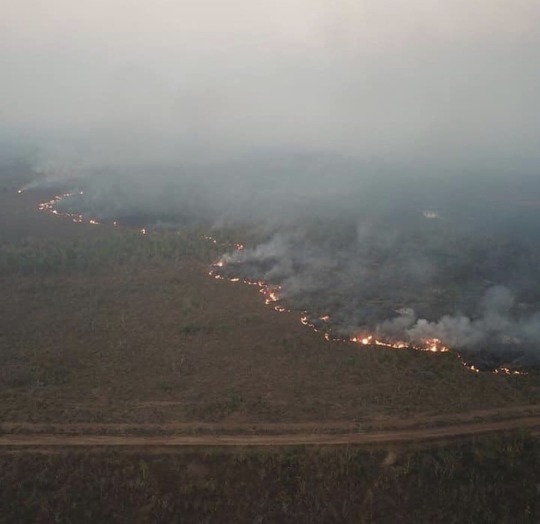
side note: not to sound bitter or ungrateful but also like what’s up with Europe… y’all exploited South America for centuries but just because you “aren’t seeing results” you stop helping altogether?? if you really wanted to help you wouldn’t stop because you think you aren’t helping lol
112K notes
·
View notes
Text

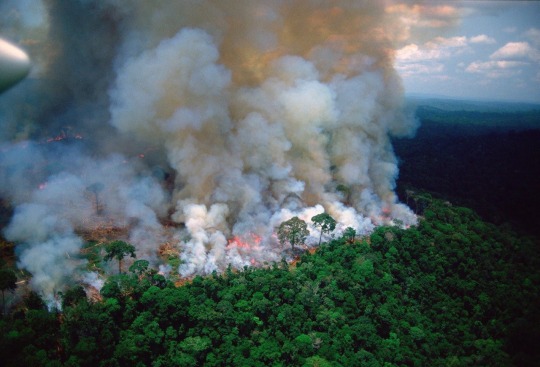

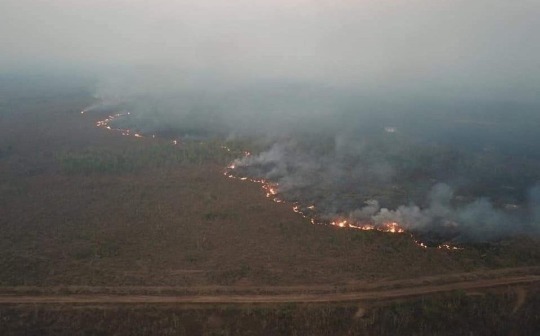
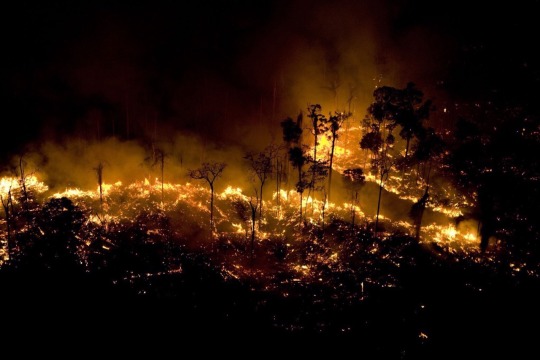
So, our Lung is on fire.
It is already threatened by huge deforestation, to the point it lost 20% of its wildth in less than 30 years.
It’s been burning for around two weeks and almost no word has been uttered about it. I, sincerely, have come to find out about it just now. I’m shooketh ™️ because we’re really burning away this planet.
The Amazon Rainforest holds 20% of global waters, it’s an area of incredible value in termns of biodiversity and, nevermind, it’s a crucial climate regulator. Spread awareness, demand help.
128K notes
·
View notes
Text
You ever see a pretty dress, a well-organised notebook, a peculiar balcony or read one line of poetry and get the overwhelming urge to reinvent yourself
135K notes
·
View notes
